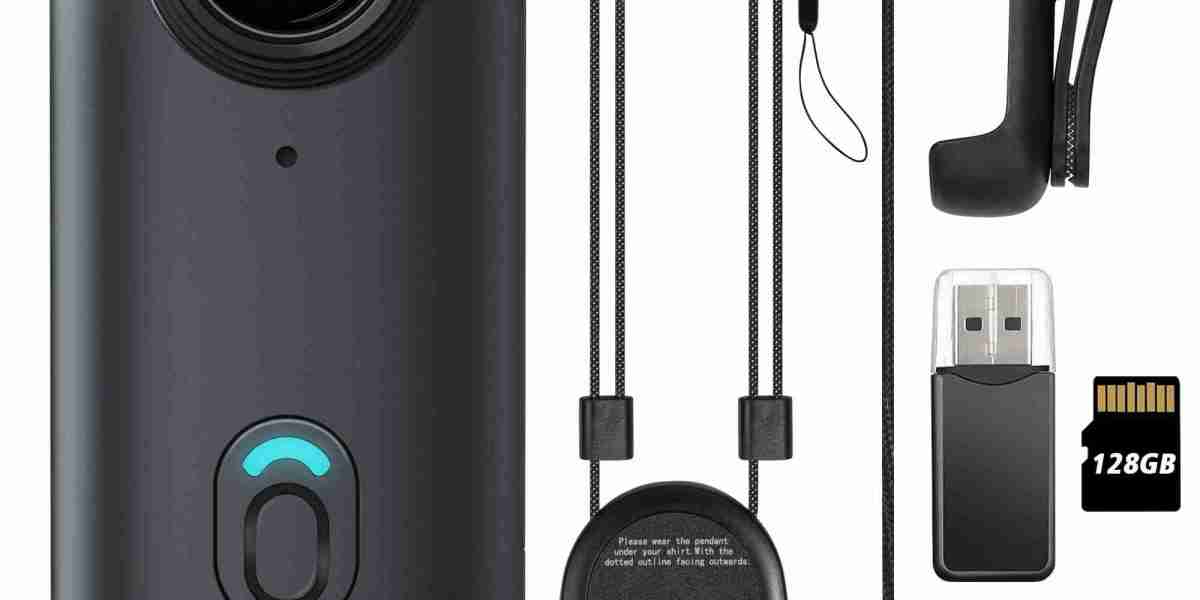The current wearable camera market scenario is marked by growing consumer adoption, rising demand in public safety sectors, and the influence of social media-driven content creation. These diverse forces are combining to reshape the market from a niche tech novelty into an increasingly mainstream and multifunctional solution.
Mainstream Adoption in Personal and Lifestyle Use
Wearable cameras were once synonymous with extreme sports and outdoor adventurers. Today, their presence has grown across casual consumers, vloggers, urban cyclists, and even parents. This scenario has significantly widened the audience, especially in markets like North America, Japan, and Western Europe, where camera wearables are being marketed as lifestyle accessories.
Increased adoption is also fueled by the culture of self-documentation. Whether it’s family road trips, bike commutes, or pet-walking, consumers are seeking wearable solutions that enable easy, immersive, hands-free recording.
Influencer Culture and Social Media Content Boom
One of the most prominent scenario shifts is the impact of influencer marketing. Content creators and influencers across platforms like YouTube, TikTok, and Instagram are relying on wearable cameras to capture first-person perspectives. This trend is particularly strong in regions with large youth populations and digital infrastructure—such as Southeast Asia, Brazil, and India.
The surge in social content creation has transformed wearable cameras into tools of income and digital identity. As a result, even budget-conscious consumers are entering the market, prompting brands to offer entry-level yet high-performance models.
Public Safety and Law Enforcement Integration
Another defining element of the current market scenario is the growing use of wearable cameras in law enforcement and public safety. Police departments, private security firms, and emergency responders are adopting these devices to document interactions, gather real-time evidence, and ensure accountability.
Several countries have passed mandates requiring body-worn cameras for police officers. This policy-driven demand has created a reliable segment within the market, offering long-term contracts and recurring revenue models for manufacturers.
Education and Healthcare Use Cases Expanding
While still emerging, wearable camera adoption is increasing in education and healthcare environments. Teachers, doctors, and paramedics are using wearable cameras to:
Document procedures
Create instructional content
Enable remote supervision and learning
These professional use cases point to a scenario where the market matures beyond casual consumers and into institutional tech ecosystems.
Technology Evolution Reshaping Product Expectations
High-definition recording, low-light performance, waterproofing, AI stabilization, and live-streaming are no longer premium features—they are becoming expectations. As a result, manufacturers are now racing to provide lightweight, durable devices with enhanced connectivity, long battery life, and seamless app integration.
The market scenario also includes emerging models with 360° capture, AR/VR support, and embedded voice assistance, positioning wearable cameras as intelligent data tools rather than just video recorders.
Distribution and Retail Scenario
Digital-first retail is dominating the wearable camera scenario. Online marketplaces, direct-to-consumer websites, and influencer-led campaigns are replacing traditional retail models. Flash sales, bundled accessory kits, and regional language support are proving successful in attracting buyers across income segments.
In developing economies, however, hybrid distribution (online plus brick-and-mortar) still plays a vital role in building consumer trust and enabling product demonstrations.
Global Market Imbalance and Opportunity
There’s an unequal maturity across global markets.
North America remains the leader in high-end and tactical applications.
Europe is policy- and privacy-driven, influencing product features.
Asia-Pacific is the most dynamic in terms of volume growth, fueled by creator communities and digital penetration.
Latin America and the Middle East are currently in the early adoption phase, presenting fertile ground for growth.
This global imbalance is reshaping the supply and marketing strategies of global brands, which now customize offerings based on local regulations, content habits, and pricing sensitivities.
Barriers in the Current Scenario
Despite its potential, the wearable camera market faces some significant hurdles:
High import duties in some regions
Lack of awareness about institutional benefits
Privacy concerns surrounding public and workplace use
Counterfeit and low-quality alternatives undermining brand trust
These barriers vary by region and consumer type, meaning the scenario requires brands to educate, localize, and differentiate.
Conclusion
The wearable camera market scenario is one of convergence: lifestyle, tech, social media, and safety needs are all driving adoption across demographics and industries. As content becomes currency and safety becomes digitized, wearable cameras are positioned to become everyday tools. The winners in this scenario will be those who balance innovation, affordability, and cross-sector relevance.




